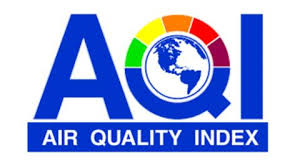The California Air Resources Board (ARB) gathers air quality (AQ) data for the State of California, ensures the quality of this data, designs and implements air models, and sets ambient air quality standards for the state. ARB compiles the state's emissions inventory and performs air quality and emissions inventory special studies.
The Air Quality Data page provides access to ambient air quality data, maps of areas that violate the national and state air quality standards, and maps of the ambient air quality monitoring network. The ARB uses the Emissions Inventory and Air Quality Models to evaluate air quality and reduce emissions in each of the 35 local air districts.
 AQMIS provides a combination of preliminary (real-time) and official (historical) data. Preliminary data are subject to change. https://www.arb.ca.gov/aqmis2/aqmis2.php
AQMIS provides a combination of preliminary (real-time) and official (historical) data. Preliminary data are subject to change. https://www.arb.ca.gov/aqmis2/aqmis2.php
 The U.S. AQI is EPA's index for reporting air quality. Think of the AQI as a yardstick that runs from 0 to 500. The higher the AQI value, the greater the level of air pollution and the greater the health concern. For example, an AQI value of 50 or below represents good air quality, while an AQI value over 300 represents hazardous air quality.
The U.S. AQI is EPA's index for reporting air quality. Think of the AQI as a yardstick that runs from 0 to 500. The higher the AQI value, the greater the level of air pollution and the greater the health concern. For example, an AQI value of 50 or below represents good air quality, while an AQI value over 300 represents hazardous air quality.
For each pollutant an AQI value of 100 generally corresponds to an ambient air concentration that equals the level of the short-term national ambient air quality standard for protection of public health. AQI values at or below 100 are generally thought of as satisfactory. When AQI values are above 100, air quality is unhealthy: at first for certain sensitive groups of people, then for everyone as AQI values get higher.
The AQI is divided into six categories. Each category corresponds to a different level of health concern. Each category also has a specific color. The color makes it easy for people to quickly determine whether air quality is reaching unhealthy levels in their communities.
EPA establishes an AQI for five major air pollutants regulated by the Clean Air Act. Each of these pollutants has a national air quality standard set by EPA to protect public health:
- ground-level ozone
- particle pollution (also known as particulate matter, including PM2.5 and PM10)
- carbon monoxide
- sulfur dioxide
- nitrogen dioxide
 Purple Air are a grassroots group with a technical background that wanted to measure the pollution coming from a mining operation in our backyard. The website and map was started in November 2015. Sharing the data and our research with others created a need for more monitors, to expand the network and to test the sensors by collocating them with other monitors.
Purple Air are a grassroots group with a technical background that wanted to measure the pollution coming from a mining operation in our backyard. The website and map was started in November 2015. Sharing the data and our research with others created a need for more monitors, to expand the network and to test the sensors by collocating them with other monitors.
The PurpleAir Map displays the points using the Federal Environmental Protection Agency (EPA) Air Quality Index (AQI) scale. The AQI allows comparison for different pollutants with an easy to visualize color scheme. The air goes from good green air to yellow to orange to red to purple air, or even hazardous maroon air. The graphs give further information on different counts, relative weights and sizes of particles in the air.
